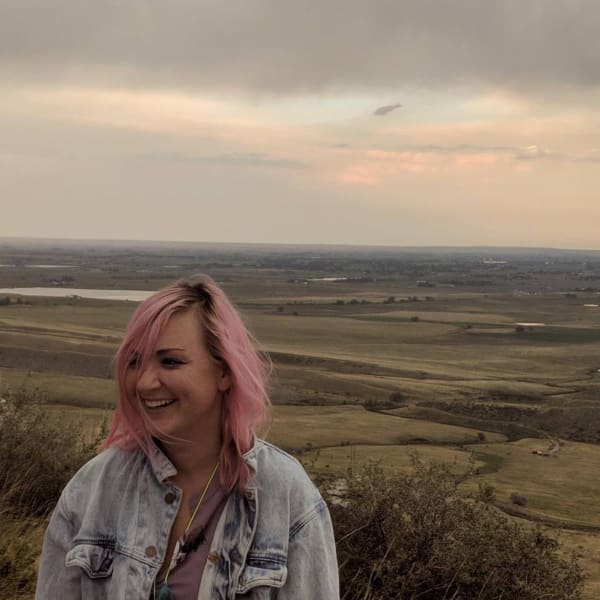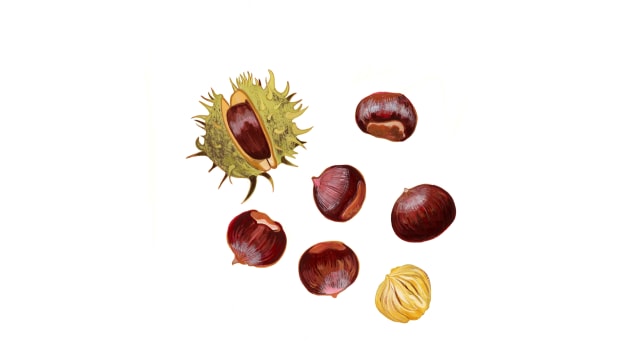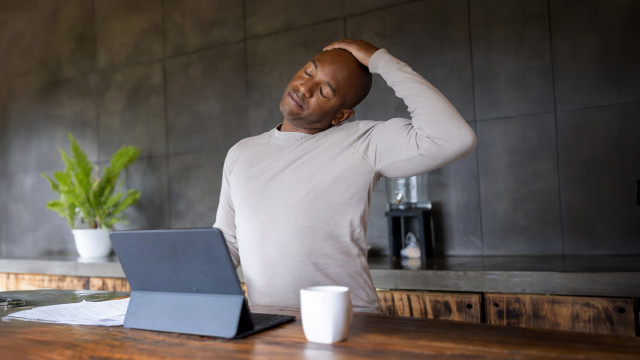5 Yoga Poses Anyone Can Do

Yoga can be intimidating — even for seasoned practitioners. The preconceived notion that you’ve got to be flexible and firm to call yourself a yogi is pretty pervasive, especially in the West. But practicing yoga actually has nothing to do with impressing people with pretzel-shapes and pretty pants. Yoga is a mind-body discipline designed to foster self-awareness and higher consciousness in anyone committed enough to try it.
Beginner’s yoga teaches us how to breathe, balance, and observe. Poses (asana) are opportunities to explore and expand your energy, to work with your breath (pranayama), and to clear your mind: You don’t have to perfect a headstand to experience yoga’s benefits (and there are many). According to the NIH, volumes of research suggests that yoga relieves stress and anxiety, improves sleep, strengthens the mind and body, and promotes healthy habits and overall wellbeing.
How? By linking your breath with basic movements and breathing deeply as you hold each pose, you’ll pull your awareness to the sensations of the present moment, calming the mind and soothing the nervous system, says yoga teacher Leah Cullis, author of Power Yoga. In fact, research shows that mindful breathing is an effective way to lower everyday stress and boost mood and immunity. As you practice these yoga poses for beginners, be mindful of the slow rise and fall of your breath: “The breath is your body’s guide during asana practice,” says Cullis.

Pose 1: Tadasana (Mountain Pose)
Benefits: Tadasana is a foundational yoga pose and the blueprint for all asana, says Cullis. It creates neutral alignment within the body, improving posture and body awareness by asking you to align your ankles, knees, hips, and shoulders.
How to:
- Stand with your feet parallel, hip-width apart.
- Lift your toes from the mat, feeling the ball of your feet engage with the ground; then lower your toes back down.
- As you inhale, draw energy up from the arches of your feet, through your legs, pelvis, spine, and the crown of the head.
- Exhale, and relax your shoulders away from your ears.
- As you continue breathing, tuck your pelvis under, gently engaging the core.
- Let your arms relax at your sides, either palms facing forward or toward you, breathing in and out with your gaze straight ahead.
Pose 2: Adho Mukha Svanasana (Downward-Facing Dog Pose)
Benefits: This restorative pose is commonly practiced as part of a yoga flow (or Sun Salutation). Since it’s a partial inversion (meaning the head goes below the heart), it improves blood flow to the brain, releases tension, and boosts energy. The shape of the stretch soothes strain in the spine, low back, and shoulders while strengthening the legs, core, arms, and upper back. “It has a calming effect on the nervous system, making the whole body relax,” says Roundglass yoga teacher Shani Dayal.
How to:
- Come to Table Top (hands and knees) with your knees stacked below your hips, wrists below your shoulders.
- Spread your fingers wide, sending energy through your arms and hands. Stay firmly grounded in the base of the index fingers.
- Tuck your toes under onto the mat.
- Inhale, pressing through your palms; exhale as you lift your knees and hips backward, pressing your hips to the sky to create an upside-down V shape with your body.
- Keep your arms energized, and your neck relaxed.
- Stay here for five breaths, relaxing into the stretch with hips high.
Pose 3: Vrksasana (Tree Pose)
Benefits: Tree Pose is a feel-good beginner’s balancing pose that opens the hips, stretches the thighs and groin, and strengthens the legs and core — improving posture. Balancing poses like Tree Pose also help focus the mind, both on and off the mat, says Dayal.
How to:
- Stand in Tadasana (Mountain Pose), with toes spread, feet pressing firmly into the mat.
- Inhale to lift the chest; exhale to relax your shoulders away from your ears, broadening your collar bones.
- Gaze straight ahead, and bring your hands together in front of your heart (or to your hips for additional balance).
- Inhale, drawing your right foot up to meet your left leg — at the ankle, shin, or inner thigh. Keep your hips square with your knee pointing out to the side, opening the hips.
- Try to balance here for five deep breaths.
- Repeat on the other side.
Pose 4: Virabhadrasana II (Warrior Pose II)
Benefits: Warrior Pose II is a common yoga pose for beginners that connects you to your inner power while strengthening the body (think shoulders, legs, and back). When done properly, Warrior I opens the chest, hips, and heart and provides a nice stretch to the arms, upper body, calves, and ankles.
How to:
- Inhale from Tadasana (Mountain Pose).
- Exhale, and step your left foot back into a lunge, with your right ankle stacked over your right knee.
- As you breath in, raise your arms overhead, with your shoulders down, biceps by the ears.
- Exhale; pivot your left foot outward about 90 degrees, with your heels perpendicular to one another.
- Inhale; raise your chest and fingertips, and let your hands float down until your arms are parallel with the floor.
- Keep your hips square to the front as you continue breathing. Take about five deep, slow breaths in the pose.

Pose 5: Vipariti Karani (Legs-Up-the-Wall Pose)
Benefits: This calming, restorative inversion can induce relaxation any time of day. Supporting your body with your legs resting up along a wall can reduce pressure in the low back, ankles, and feet and help soothe tension headaches. Practicing for a few minutes before bed has been shown to help the body unwind and improve sleep — bonus if you put an eye pillow over your eyes, says yoga and meditation teacher Cyndi Lee.
How to:
- Sit on the floor facing a blank wall, knees bent, feet hip-width apart.
- Slowly, one vertebrae at a time, lower your shoulders and head to the floor.
- Raise your feet to the wall, and scoot your tailbone as close as feels comfortable.
- Turn your palms up, and relax your arms and shoulders, breathing deeply in and out. Close your eyes if you wish.
- Breathe in again, and on the exhale, release any tension in your legs, hips, and back.
- Allow your spine to lengthen and sink into the earth as you breath here until you’re deeply relaxed.
Remember to be kind to yourself as you practice these basic yoga poses. Each pose looks different on every body, so focus the feeling of the pose instead of how it looks in the mirror. Yoga is meant to unite the mind and body. Anyone can enjoy its benefits. You can come back to these foundational yoga poses time and again as you build your practice.
Try this class: Vinyasa Yoga Basics Find a sense of ease as you move through feel-good favorites like sun salutations and warrior variations. Join Leah Cullis for a flow featuring vinyasa yoga’s most essential poses.
We have a library of practices to help build your vinysasa practice. Download the Roundglass app to try a vinyasa yoga flow.
Key Takeaways:
- Yoga is a mind-body discipline designed to foster self-awareness and higher consciousness that anyone can practice.
- Beginner yoga poses (asana) are an opportunity to explore and expand your energy, to work with your breath (pranayama), and to clear your mind.
- Research shows that yoga relieves stress and anxiety, improves sleep, strengthens the mind and body, and promotes healthy habits.







